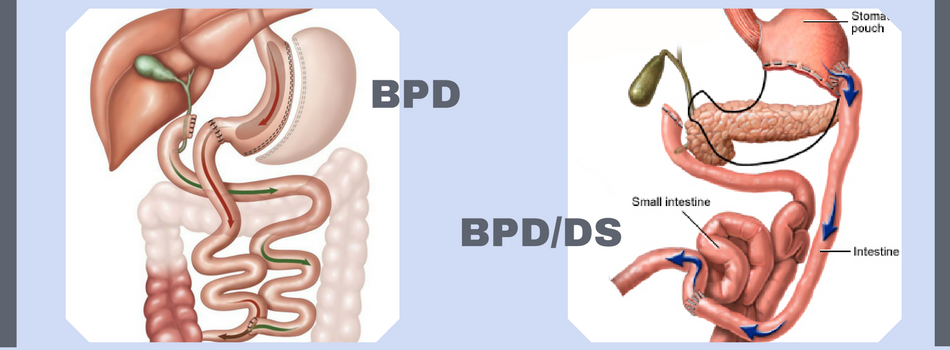An Introduction to BPD & BDP/DS
BPD stands for Bilio Pancreatic Diversion and BPD/DS stands for Bilio Pancreatic Diversion with Duodenal Switch.
Who are the candidates for the Duodenal Switch Surgical Procedure?
The class of individuals who have BMI of above 50 are termed super obese. Generally, individuals who are super obese are candidates for both the procedures. It may be noted that the super obese invariably would be having severe co-morbid conditions like Type-2 Diabetes, Sleep apnea, Heart diseases, High BP, High cholesterol etc. BPD (Bilio Pancreatic Diversion) and BPD/DS (Bilio Pancreatic Diversion with Duodenal Switch) are the two surgery types recommended for such people. So it is found that BPD and BPD/DS procedure gives them relief from the above said co-morbid conditions to a great extent.
Surgical Procedure in BPD and BPD/DS Surgery
In BPD procedure, 3/4th of the stomach is removed horizontally and in this process, the upper part of the stomach is retained.
In BPD / DS procedure, 3/4th of the stomach is removed vertically along the natural curvature exactly similar to gastric sleeve procedure. The above two forms the restrictive portion of both BPD and BPD/DS surgical procedure.
After this procedure is completed, in both BPD and BPD/DS, two separate pathways are created. One pathway is called the digestive pathway, where a connection is made from the end of the stomach to the common pathway usually in the end portion of the small intestine. Another pathway is the biliopancreatic loop which carries bile from the liver to this same common pathway. Here since a major small intestine part is bypassed, the nutrient absorbing capacity of the little food that is consumed is greatly reduced. So, essentially this part of the procedure forms the malabsorption portion of the weight loss surgery. Both the pathways created get connected to a common pathway. The digestive pathway is a connection made from the end of the stomach to the common pathway.
Weight Loss by BPD and BPD/DS Surgery
Since the capacity of the stomach is reduced because of removal of part stomach either vertically or horizontally, the intake of food quantity is greatly reduced and hence it is part restrictive.
Also since the major small intestine part is bypassed, the nutrient absorbing capacity is greatly reduced. Hence in this part, the principle of mal-absorption comes into play.
Dr Maran in his experience, recommends BPD for super obese male and BPD/DS for super obese female. The reason is simple. In BPD/DS, a minimal area of the distal part of the stomach is retained where calcium, iron and other vitamin b12 absorption takes place. Since women face osteoporosis (thinning of bone due to demineralization) at menopause, BPD/DS is preferred.

